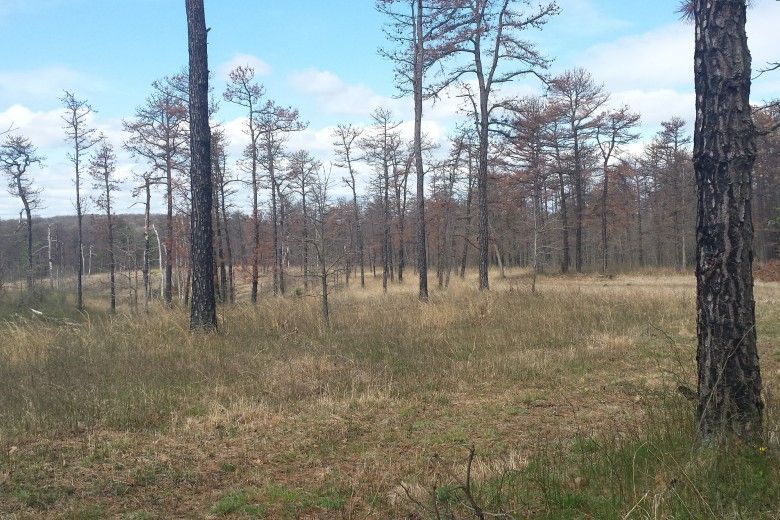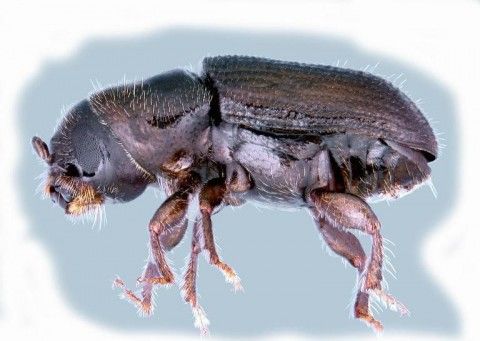History and Aftermath of the Southern Pine Bark Beetle in Nottingham County Park

In the summer of 2015, pitch pines in Nottingham County Park and nearby sites started showing signs of stress. The crowns of the trees had started yellowing. Later, pea-sized globs of white resin were noticed on the bark of a few trees. At the time the Southern Pine Bark beetle was not yet considered a threat. They had been known to affect a damaged tree from time to time, but had never mounted a large infestation in Pennsylvania. By the fall of 2017 nearly every single pitch pine in the area was dead or dying. The infestation stretched from nearby state forest lands in the south to privately held tracts to the north.

Nottingham County Park is unique. Known as “The Barrens” because of the soils refusal to support any form of agriculture; the area has a history of wildfires, mining and abandonment. In 1963 the 651-acre site became the first Chester County park. The geology is dominated by serpentine—a type of rock that forms thin soils, containing nickel, chromium and molybdenum. Most plants find this thin, dry, nutrient poor, metal rich soil toxic. Plants that thrive here have adapted to this specific site. Many of these species are “globally rare, locally abundant”. While you can’t find these plants many other places, less than 1% of the Earth’s surface geology is made up of the serpentine group—they dominate the barrens. There are also more than a dozen globally or state rare moths and butterflies that have been identified on the site.
Pitch pines colonize serpentine barrens, and along with blackjack oak and grasses, create a pine/oak savannah ecosystem that feels more like the Midwest than the Mid-Atlantic. The pitch pines that stood in Nottingham made the park stand out, even from other barrens sites. In 2008 the park was awarded National Natural Landmark status by the Department of the Interior. One of the differentiating factors in choosing Nottingham were its pines. None of the other state pine barrens sites supported a large pitch pine population. The success of the pitch pines was attributed to wildfires, which continued to occur at the Nottingham site even after successful fire suppression at other sites beginning in the early 1900s. The savannah is fire dependent. Without regular fire, barrens sites succeed to typical forest. Chester County has used controlled burns to maintain the barrens.

In a typical forest, leaving the dead trees to decay and release the nutrients they had stored over the decades would be critical. However, at Nottingham, as much of the dead wood was removed as possible, because thin, nutrient poor, normally toxic soils are what give the rare plants that inhabit the barrens their advantage. The trees were cut, stripped of their branches, and loaded onto trucks. The process required several heavy machines to run through the area numerous times. This is a system that thrives on disturbance: the infestation and tree removal were a large disturbance. The landscape was deeply altered. Seeps moved, decades old trails disappeared; frequent visitors and even staff weren’t always where they thought they were.




Serpentine barrens are irreplaceable pieces of natural history. They tell the story of geological and climatic changes, of evolutionary triumphs and rarities, and of the long history of human use and impact. Several universities visit the park each year to study geology, botany and ecology. Visitors either love the novelty of the landscape or hate the rocky, sunny trails. Fall and spring are the best times to visit—in summer it can be up to 10 degrees hotter in the barrens than the rest of the area. In late summer and early fall there are still plenty of wildflowers to be seen, and the grasses start to take on a muted palette of fall color.
